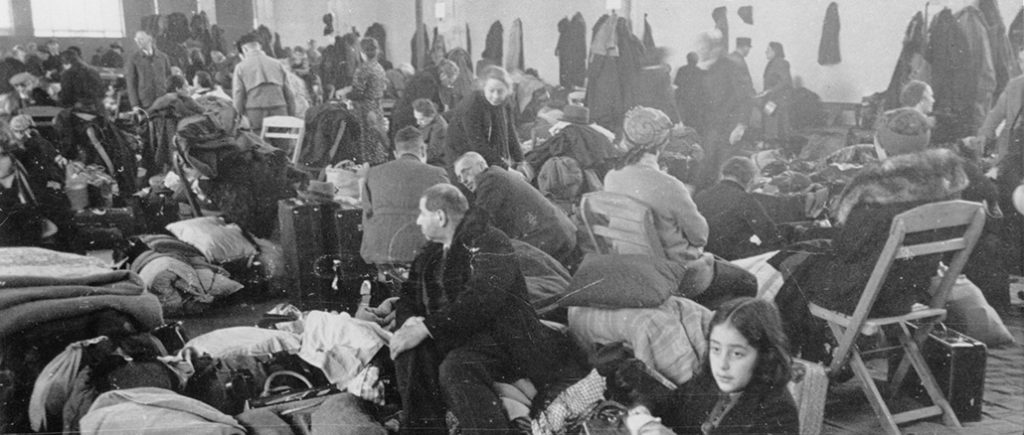
Joel König, who went into hiding in Hansaviertel
“The Levetzow Synagogue was on a very busy intersection, right next to the NW 87 Post Office. Although Berliners are always very busy, they could not have failed to see the Berlin Jews, young and old, schlepping to the synagogue with backpacks and hand luggage. Once I dared come out of my hiding place and I saw with my own eyes that they, the Berliners, could see it happening.”
In October 1941, the Gestapo, which was the Nazi state’s secret police, informed the Jewish community of the upcoming deportations. They instructed the community to turn their synagogue into a collection camp for around 1,000 people. Chairs were removed and straw was put down to sleep on.
The congregation’s employees also had to prepare the removal of their members, friends, and neighbours. For example, they had to write down what possessions people brought with them and coordinate help with carrying luggage and other tasks. Not least, the congregation employees had to provide food and safety personnel.
Presumably, this synagogue was chosen as the collection camp because it was rather large and only a little damaged.
From October 1941 to October 1942, this was the starting point of the “Osttransporte”, transports to the East, meaning deportations to concentration camps. The Gestapo ordered people to come to the collection camp on particular dates. If they did not appear voluntarily, they were collected by force from their homes.
That was not the last time it happened: After 27th February 1943, the synagogue was once again misappropriated as a collection camp as part of the “Fabrikaktion (‘Factory Action’). Most detainees were only there for a few days. During the “Fabrikaktion”, around 11,000 Jewish forced labourers were arrested right at their places of work.
Until August 1942, people were taken from Levetzowstrasse to Grunewald train station, from where they too were transported to the concentration camps. They had to go on foot or were taken in police vans or furniture trucks. In the autumn, Moabit goods station was added as a deportation site. About 37,500 people passed through the Levetzowstrasse collection camp. Most detainees were only there for a few days.
As well as the synagogue, there were two other large collection camps: One was in the Jewish Hospital in Wedding, the other in Grosse Hamburger Strasse in Mitte district, where the Jewish Retirement Home had been converted into a prison. Several smaller collection camps were set up temporarily, such as one in a riding hall in Feldzeugmeisterstrasse barracks, here in Moabit.
Most of the people detained in Levetzowstrasse had an idea where their deportation would end. Some of them chose suicide as their final act of self-determination. They jumped to their deaths from one of the galleries to the marble floor below or dropped through the window of the upper gallery to the pavement in front of the building. However, there was also resistance. The synagogue’s electrician Werner Scharff, aged 31, rescued a number of people. You can find out how at another stop.

